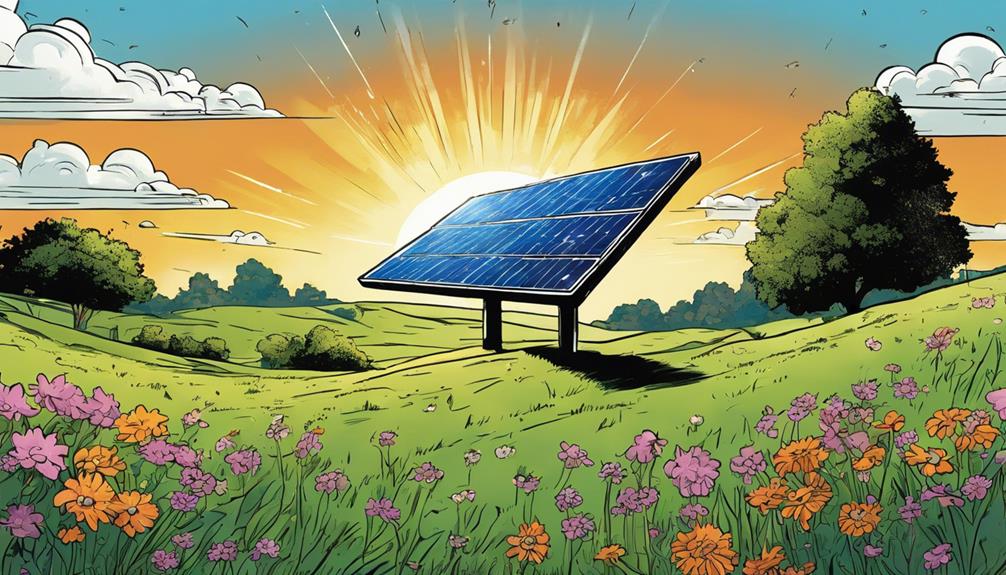As we tap into geothermal energy, we're faced with environmental concerns like high water usage, disrupted natural flow patterns, and potential mineral releases. But we can mitigate these impacts by managing water quality, minimizing ecosystem harm, and reducing habitat loss. Geothermal energy is more cost-effective than solar power, with higher capacity factors and lower installation costs. To guarantee sustainability, we need strong regulations prioritizing environmental standards and responsible production. Now, let's dive deeper into the solutions and strategies that can help us harness geothermal energy while protecting our planet.
Key Takeaways
- Geothermal power plants can disrupt natural flow patterns, introduce harmful minerals, and cause land disruption and habitat loss.
- Managing water usage, monitoring water quality, and minimizing harm to ecosystems can mitigate negative environmental impacts.
- Geothermal energy is more cost-effective than solar power, with lower installation costs and higher capacity factors.
- Strong regulations, sustainable practices, and adherence to environmental standards can ensure responsible geothermal energy production.
- Overcoming adoption challenges requires addressing exploration and site assessment challenges, technological limitations, and lack of public awareness.
Environmental Concerns and Risks
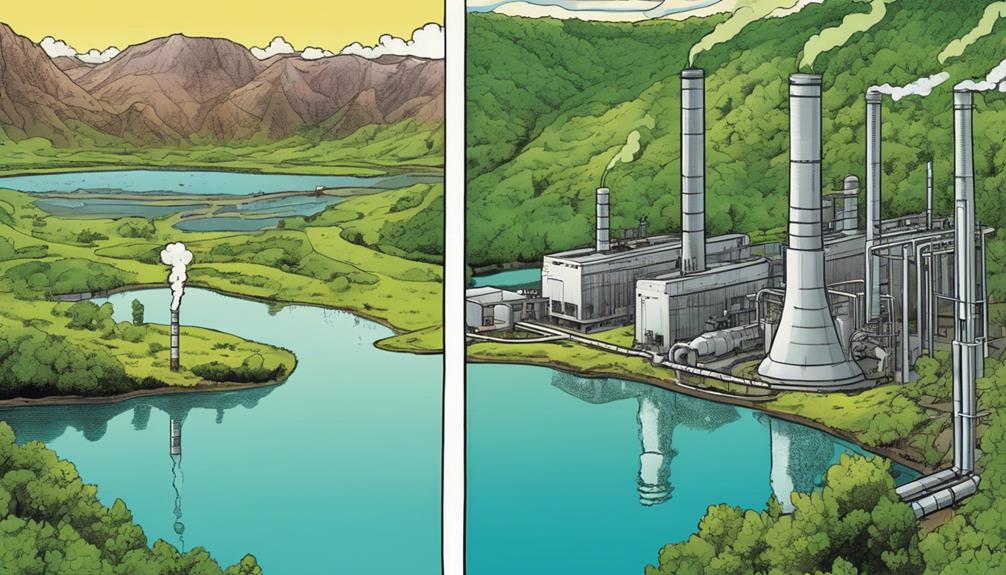
As we explore the world of geothermal energy, we must acknowledge the environmental concerns and risks that come with harnessing this powerful resource. One of the significant impacts is on water resources, as geothermal power plants require high water usage, which can disrupt natural flow patterns and introduce harmful minerals into the environment.
Moreover, the development of geothermal sites can cause land disruption, habitat loss, and displacement of wildlife. We must also consider the risks of geothermal fluids and chemical releases, which can contaminate soil and water.
In addition, geothermal power plants contribute to noise and visual pollution, and may even induce seismic activity. It's crucial to recognize these environmental concerns and develop strategies to mitigate them.
Mitigating the Negative Impacts
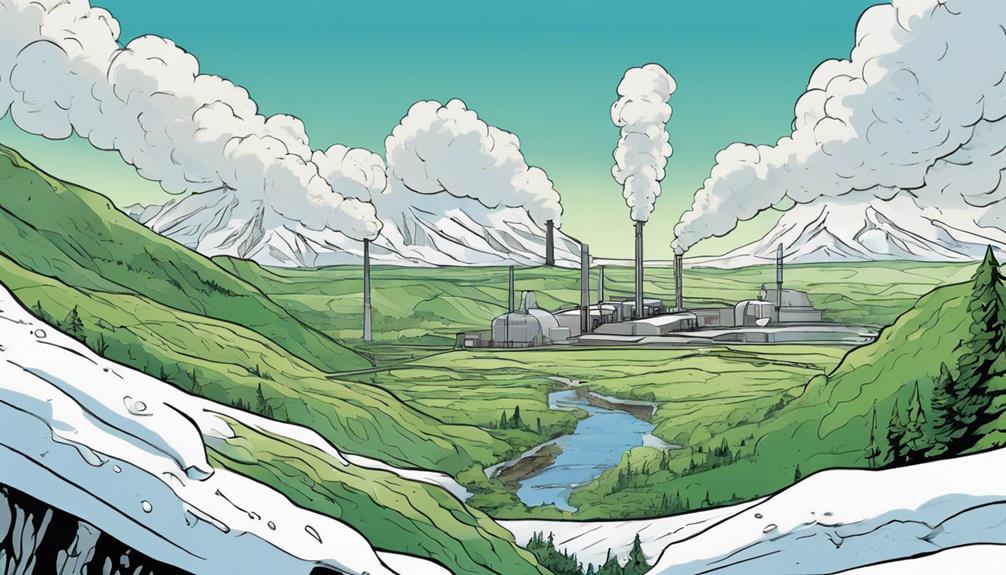
We must implement effective strategies to mitigate the negative environmental impacts of geothermal energy, focusing on managing water usage and monitoring water quality to minimize harm to ecosystems.
By doing so, we can reduce the disturbance of natural flow patterns and prevent the release of harmful minerals into water resources.
Additionally, we need to minimize habitat loss and implement wildlife protection measures to preserve biodiversity.
Remediation techniques can also be used to mitigate the risks of geothermal fluids and chemical releases.
Comparing Geothermal to Others
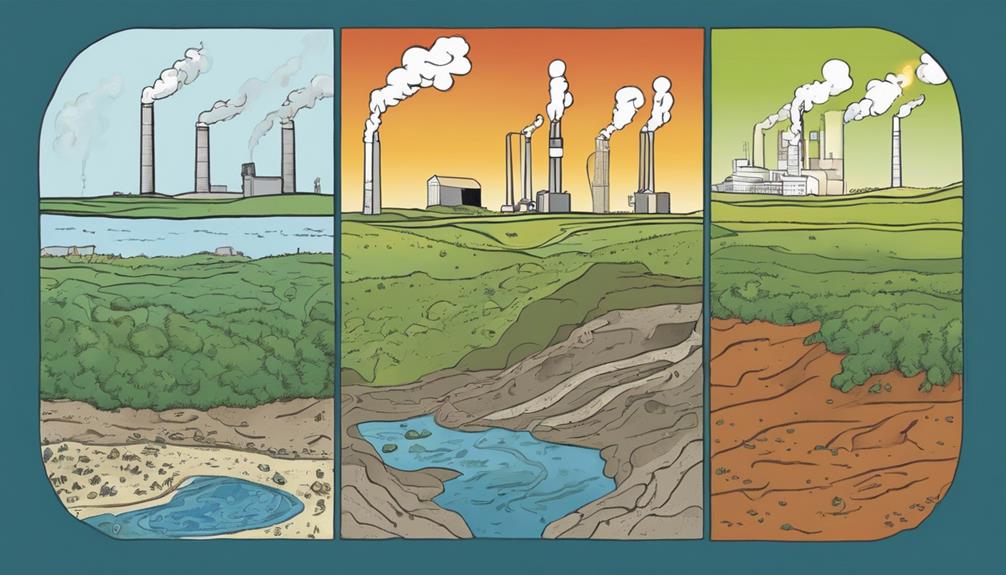
While solar and wind power often steal the spotlight, geothermal energy's unique advantages make it a compelling alternative, particularly when considering cost, efficiency, and location.
We find that geothermal energy is more cost-effective than solar power, with lower installation costs and higher capacity factors.
Regarding efficiency, geothermal power plants can operate at capacities of 90% or higher, compared to 30-40% for solar and wind power.
Moreover, geothermal energy can be harnessed in specific locations with suitable geological conditions, making it a reliable option for regions with high energy demand.
Regulations for Sustainability
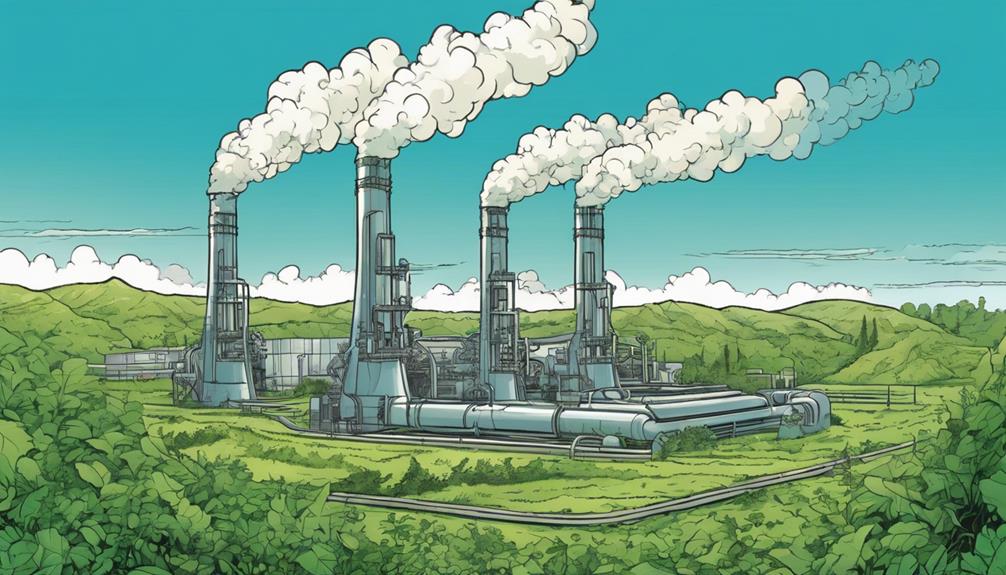
Effective regulations are necessary to guarantee that geothermal energy is developed and utilized in a sustainable manner, balancing the need for energy production with environmental and social responsibilities.
As we move forward with geothermal energy adoption, it's critical that we establish a strong regulatory framework to guide the industry. This framework should prioritize sustainable practices, responsible production, and efficient energy production.
Here are some key considerations:
- Adherence to environmental standards and guidelines
- Implementation of monitoring and reporting systems
- Protection of local ecosystems and wildlife habitats
- Community engagement and consent processes
- Regular review and update of regulations to guarantee they remain effective
Overcoming Adoption Challenges

As geothermal energy aims to become a mainstream renewable source, several hurdles must be cleared to facilitate widespread adoption, including exploration and site assessment challenges, technological limitations, and lack of public awareness. We must address these challenges head-on to reveal the full potential of geothermal energy.
Drilling risks and specialized equipment needs are significant obstacles in exploration and site assessment. Technological advancements are necessary to overcome system design and maintenance limitations. Additionally, we need to educate the public about the benefits of geothermal energy through targeted campaigns.
Simplifying regulations and permitting processes will also help reduce barriers to entry. By tackling these challenges, we can increase adoption rates, reduce upfront costs, and make geothermal energy a viable option for a sustainable future.
Frequently Asked Questions
Can Geothermal Energy Be Used for Heating and Cooling Buildings Directly?
We can definitely use geothermal energy for heating and cooling buildings directly. By tapping into the Earth's natural heat, we can provide efficient, sustainable, and cost-effective temperature control for our buildings.
How Does Geothermal Energy Compare to Fossil Fuels in Terms of Scalability?
We find that geothermal energy is more limited in scalability compared to fossil fuels, as it relies on specific geographic locations with suitable heat resources, whereas fossil fuels can be extracted and used globally.
Are Geothermal Power Plants Suitable for Small-Scale, Local Energy Production?
We wholeheartedly believe geothermal power plants can be wisely woven into small-scale, local energy production, offering a reliable, renewable resource that can robustly reduce reliance on fossil fuels in rural areas.
Can Geothermal Energy Be Used to Power Electric Vehicles Directly?
We're exploring if geothermal energy can directly power electric vehicles. While it's theoretically possible, the infrastructure for direct geothermal-electric vehicle charging doesn't exist yet, but it's an interesting concept worth further investigation.
Are There Any Successful Geothermal Energy Projects in Urban Areas?
"Who'd have thought we'd find geothermal energy thriving in urban jungles? Yes, surprisingly, there are successful projects like the Munich, Germany, and Paris, France, district heating systems, proving geothermal can warm our cities too!"
How is Geothermal Energy Impacting the Environment and What Solutions are Being Implemented?
Geothermal energy in North Carolina is impacting the environment positively by reducing greenhouse gas emissions and air pollution. Solutions being implemented include the development of more efficient geothermal power plants and the promotion of geothermal heating and cooling systems to reduce the reliance on fossil fuels.
Conclusion
As we navigate the complex landscape of geothermal energy, we're reminded of the wise words of a Native American proverb: 'We borrow the Earth from our children.'
Our actions today will determine the world they inherit tomorrow. By acknowledging the environmental concerns and implementing solutions, we can harness geothermal power while preserving the planet's integrity.
The journey ahead won't be easy, but with collective effort, we can create a sustainable future where energy and environment coexist in harmony.






